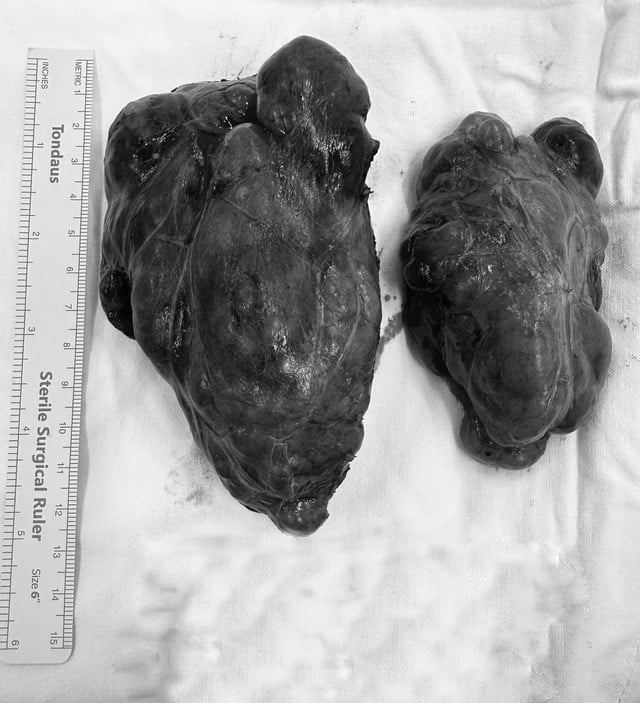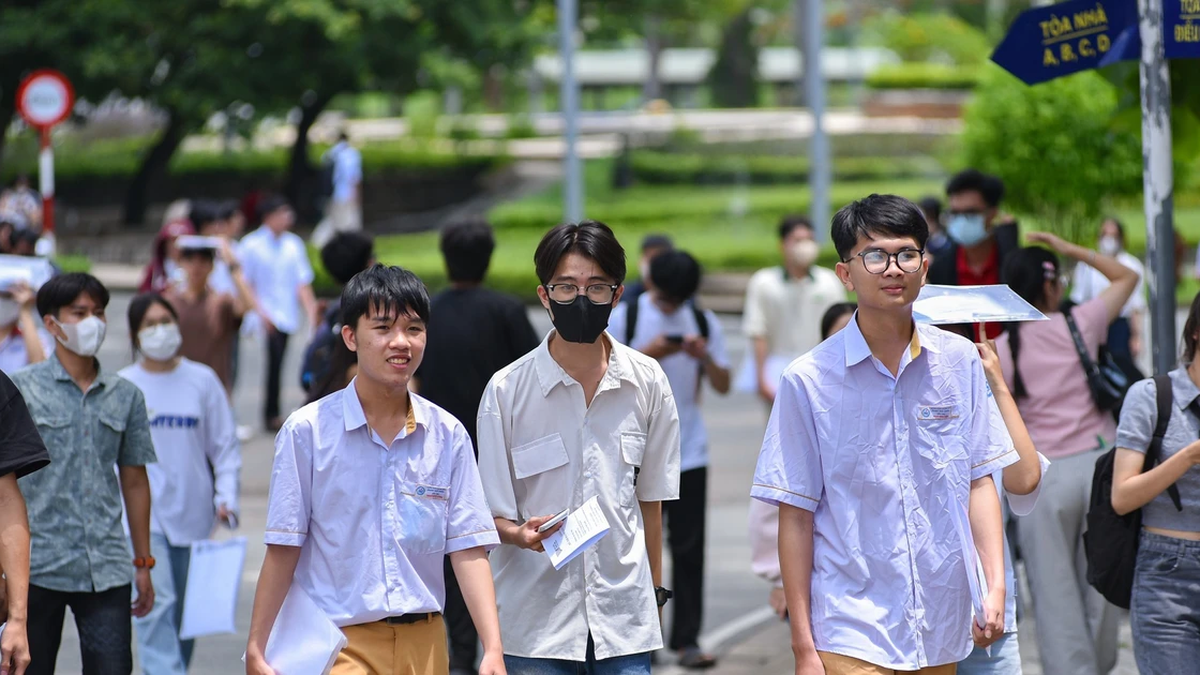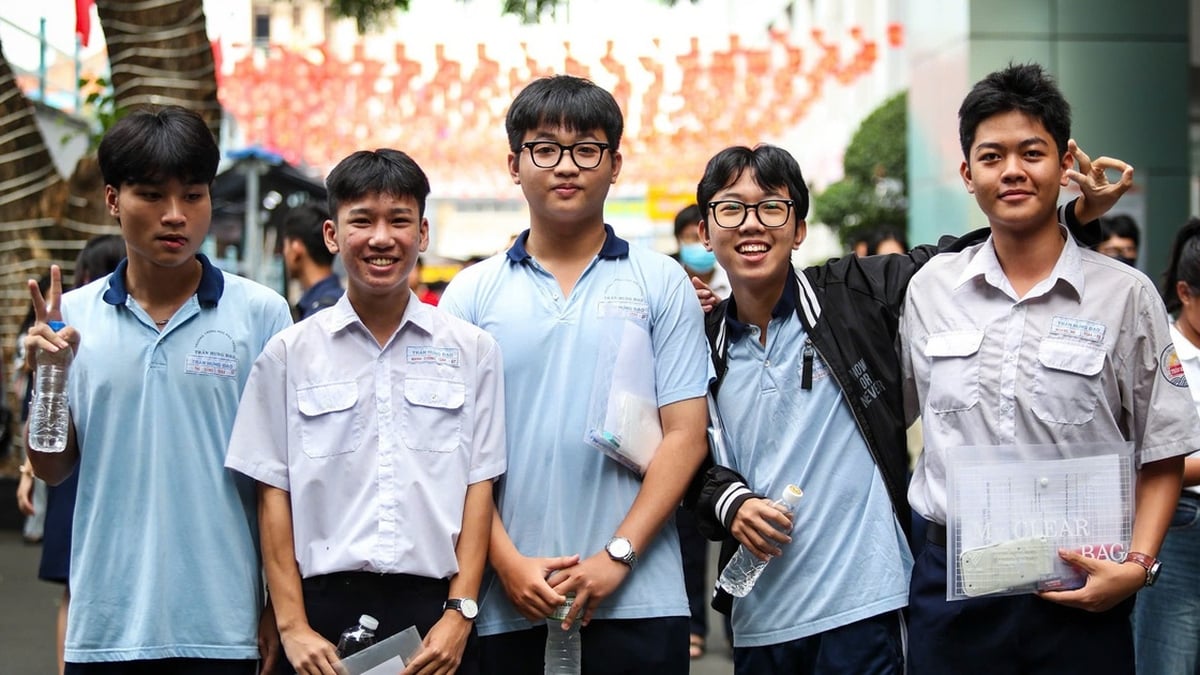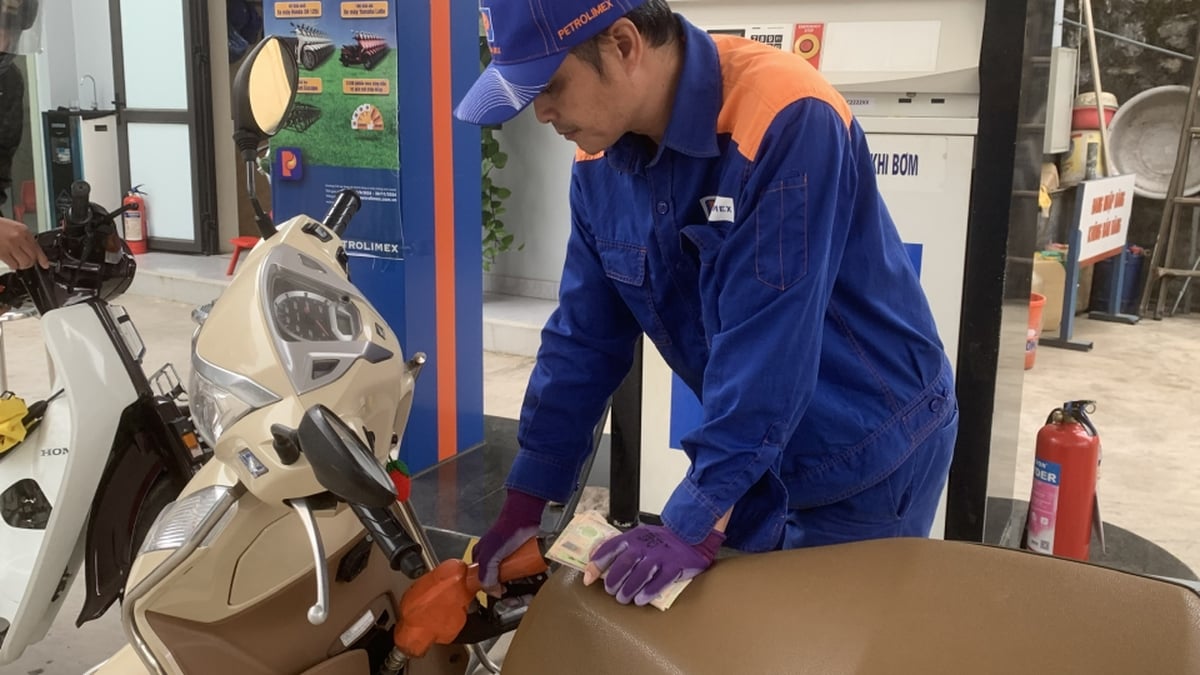Recently, Ms. H. often felt short of breath, so she went to the hospital for examination and was transferred to Gia Dinh People's Hospital (HCMC) for treatment.
On May 3, specialist 2 Tran Nhu Hung Viet, Head of the Department of Thoracic - Vascular - Goiter Surgery, Gia Dinh People's Hospital, said that the large goiter deformed the neck area, potentially compressing surrounding structures, especially the trachea and potentially shunting the mediastinum. The patient was ordered a contrast CT scan of the neck and chest, the results showed that the large goiter compressed and narrowed the neck trachea.
"The patient is elderly and has many underlying diseases such as high blood pressure, type 2 diabetes, and heart failure, so the risk of intubation during anesthesia is very difficult and the risk of surgery is very high. In addition, the large, calcified, compressed, and flattened multinodular goiter in both lobes compresses and flattens the trachea and partially descends into the mediastinum, making it difficult to remove the goiter and preserve important nearby structures," said Dr. Viet.

Goiter was successfully removed surgically
BSCC
The team of doctors from the Department of Thoracic Surgery - Vascular - Goiter coordinated with the Department of Anesthesia and Resuscitation to perform surgery to remove the goiter from the patient. The doctors successfully placed an endotracheal tube in the old woman, and at the same time, the surgeons skillfully removed the two thyroid lobes with dimensions of 13x6x6 cm on the right and 9x6x5 cm on the left, preserving important nearby structures without bleeding.
Master - Doctor Nguyen Thi Cam, Department of Thoracic - Vascular - Goiter Surgery, Gia Dinh People's Hospital, said that elderly patients with many underlying diseases and large tumors are a challenge for doctors. The team must coordinate with many different specialties, internal medicine, and surgery to ensure the safety of the patient before, during and after surgery.
The surgery was successful. The patient's endotracheal tube was removed a day later and continued to be monitored. After the surgery, the old lady could speak clearly, her hands were not numb, the surgical wound was dry, the surgical wound drained out a little dark red fluid, the drain was removed and she was discharged.
Most cases of goiter are benign.
Doctor Viet said that most cases of goiter are benign, only 3 - 6% are malignant. Mediastinal goiter accounts for a small percentage (3 - 20%) of goiter cases. Not only does it invade the two thyroid lobes, esophagus and trachea, this type of goiter also hangs down into the chest, compressing important blood vessels, causing symptoms of chest tightness, difficulty breathing, hoarseness, difficulty swallowing, and even superior vena cava syndrome.
To avoid large goiters, thyroid ultrasound screening for thyroid nodules is very important. Thyroid abnormalities can be detected through medical examination or early detection through regular health check-ups.
"When a tumor is detected in the neck area, the patient should go to a hospital with an oncology department for diagnosis and early treatment to avoid the case where the tumor becomes too large and penetrates deep into the chest, causing dangerous complications such as compression of the trachea, esophagus, blood vessels and nerves, and cancer," the doctor advised.
Source: https://thanhnien.vn/cu-ba-bi-khoi-buou-co-to-chen-ep-gay-kho-tho-185240503141103619.htm




































































































Comment (0)